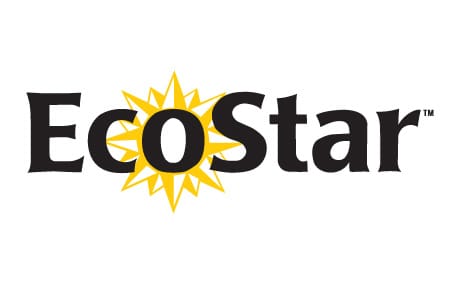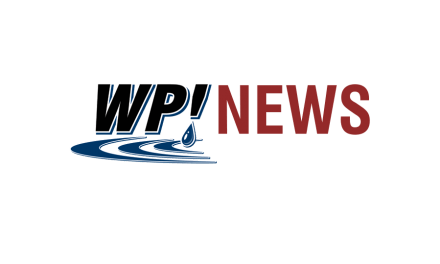
ANSI-Certified Bentonite
Carlisle Coatings & Waterproofing Inc. (CCW) recently certified one of their Bentonite waterproofing membranes with a national standards organization.
The product, CCW MiraCLAY GM, is a Bentonite clay waterproofing membrane with a geomembrane liner. It’s designed for waterproofing below-grade structural slabs and retention walls.
The membrane was tested and certified to NSF/ANSI Standard 61 at the Ann Arbor, Michigan laboratories of NSF International, an independent, not-for-profit organization that writes standards and certifies products to protect public health. By receiving NSF Standard 61 Certification, users of the CCW MiraCLAY GM product are assured it will not contribute contaminants to the ground water.
“This NSF-61 certification has really opened the door for MiraCLAY GM because it can now be used on a number of critical waterproofing applications,” Jason Covington said. Covington is general manager at CCW.
Like other Bentonite products, MiraCLAY GM can seal itself if ripped or punctured, and can also seal minor cracks in concrete.

Imitation Slate Roof Times under New Ownership
EcoStar, known for its premium roofing tiles manufactured from recycled rubber and plastic, was recently purchased by Staroba Plastics. Based in Holland, NY, Staroba Plastics has manufactured the product since its inception. The company is now known as EcoStar LLC. It was purchased from Carlisle Construction Materials.
EcoStar LLC will have full control of all aspects of manufacturing, marketing and selling the EcoStar line of products and will be ideally positioned to consolidate its position as North America’s leading supplier of synthetic roofing tiles.
The first synthetic slate tiles sold in the U.S were marketed by the Staroba family in 1996. Ed Staroba, EcoStar general manager said, “EcoStar has retained the sales and marketing management who have been in place since 1998. EcoStar also has a very well-known base of manufacturer representation and distribution that has been instrumental in the success of the product since the very beginning.”
ool project that was initially built prior to 1978, make sure you factor the extra cost of compliance into your bid.”

New Logo for Merkrete
Merkrete, a waterproofing under-layment for tile and stone installation, now has a new look and branding strategy. Since its founding in 1971, over one billion sq. ft. of product have been installed.
Now part of the ParexLaHabra family, the company has a new identity and logo to reflect their re-tooled business strategy. According to Lisa Williams, marketing communications manager at ParexLahabra, “the new Merkrete strives to be a forward-looking, progressive, dynamic, evolving, and proactive brand. This new look showcases the brand’s position as it continues to advance in the market place. Merkrete is aiming high on product innovation, service excellence, customer satisfaction, and trusted value.”

Trade Groups Form Alliance
A strategic alliance has been established between RCI, Inc. and the Sealant Waterproofing and Restoration (SWR) Institute.
According to RCI president David Hawn, “The alliance strengthens the voice of both RCI and the SWR Institute. It expands professional development opportunities for construction, consulting and contracting professionals, and it will present a united message regarding methods, techniques and products used in the industry.”
SWR Institute President Jed Daniel concurs. “Working with RCI not only helps both organizations but the entire industry. SWR Institute is excited about the possibilities of this alliance.” The organizations will share industry expertise and information for the mutual benefit of both associations.
RCI and SWR Institute have begun collectively developing educational documents and programs for sealant, waterproofing, building exterior, and restoration practitioners.
For more information on these two groups, visit www.rci-online.org and www.swrionline.org.

Sika Commits to Environmental Standards
Sika Sarnafil, a manufacturer of roofing and waterproofing membranes, has committed to implement some of the nation’s top environmental, sustainability and safety standards.
The commitment covers Sika Sarnafil U.S. headquarters and manufacturing operations in Canton, Mass., as well as all seven other company facilities across the country.
By registering for the Responsible Care 14001:2009 and ISO 14001:2004 standards, Sika Sarnafil has formalized their commitment to constant improvement in safety and environmental performance.
“This achievement… is due to the hard work and efforts of a team of Sika Sarnafil employees that worked together to assemble the program and successfully implemented it,” notes Sika Sarnafil Environmental Health and Safety Manager Mark Franklin.
Responsible Care is a global chemical industry performance initiative implemented in the U.S. by the American Chemical Council. Responsible Care companies have reduced environmental releases by 73% over the past 18 years and achieved an employee safety record that is more than four times safer than the average of the U.S. manufacturing sector as a whole. ISO is a network of national environmental standards in 162 countries, forming a bridge between the public and private sectors so that a consensus can be reached on solutions that meet both the requirements of business and the broader needs of society.

EPA Issues New Rules For Renovation Contractors
A new Environmental Protection Agency (EPA) ruling requires that virtually all renovation contractors need to become EPA certified.
Starting April 22, 2010 the EPA will require all contractors performing repairs in buildings built before 1978 to become certified to avoid “environmental contamination” that could be caused by lead paint.
Lead has been shown to affect children’s brains and developing nervous systems, causing reduced IQ, learning disabilities, and behavioral problems; it can also be harmful to adults.
To become certified, renovation contractors must complete an eight-hour training course, offered by an EPA-accredited training provider, and submit an application with a $300 payment to the EPA. The application can be downloaded at www.epa.gov.
Contractors working in Wisconsin, Iowa, or North Carolina must undergo state training and certification as well.
Basically, if a renovation project in a pre-1978 building affects more than 6 sq. ft. of interior space or more than 20 sq. ft. of exterior space, the entire project must be “white-glove” clean. All ducts and other heating/ventilating openings must be sealed with impervious coverings. Floors and ground must be covered with impervious coverings. High-speed equipment such as sanders and grinders can be used only if all exhaust air passes through an HEPA filter, and the entire work area must wiped down daily. Fines for those who choose not to comply can run up to $25,000 per incident.
The EPA will allow exceptions if a certified inspector or an EPA-certified test kit indicate that no lead paint is present.
“Working on older structures will become more complex, more time-consuming, and more expensive after April 2010,” says one attorney familiar with the new rules. If you intend to bid on any home, childcare facility, or school project that was initially built prior to 1978, make sure you factor the extra cost of compliance into your bid.”












